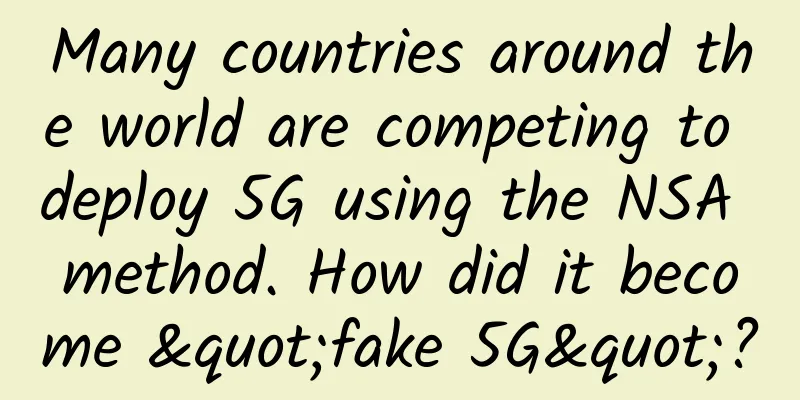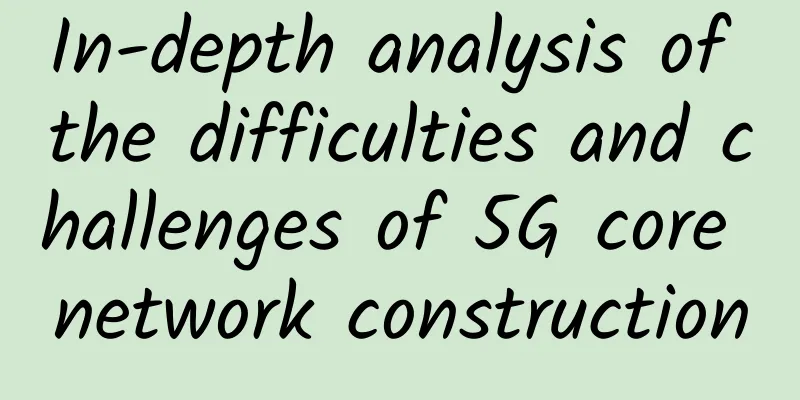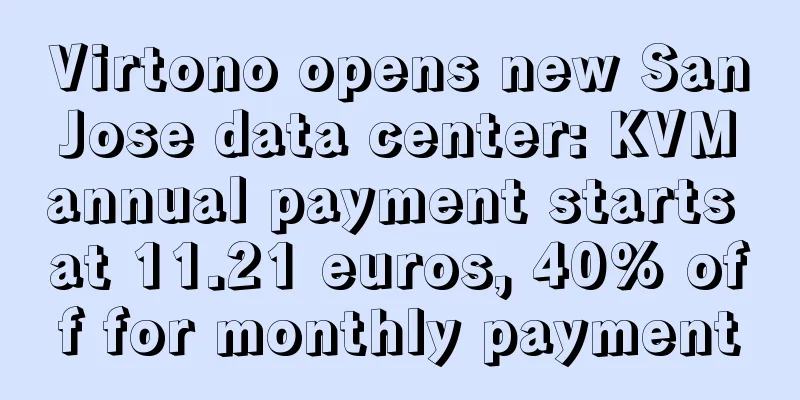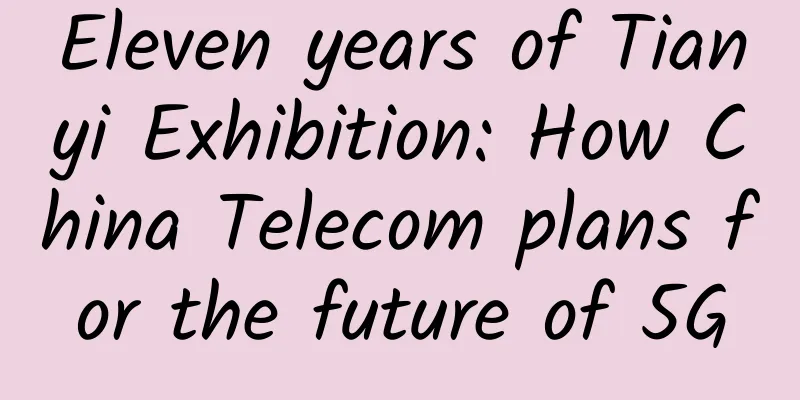Many countries around the world are competing to deploy 5G using the NSA method. How did it become "fake 5G"?

|
At 11:00 pm on April 3, 2019, South Korean operators SK and KT simultaneously announced the launch of 5G network services. Prior to this, the two operators had planned to announce the official commercial launch on April 5, but in view of the fact that the US operator Verizon will announce the official commercial launch of 5G network on April 3, South Korea decisively decided to release it two days in advance, just one hour ahead of Verizon, grabbing the 5G crown.
At a subsequent press conference in the United States, Verizon expressed great dissatisfaction, arguing that when South Korea announced its commercial use on April 3, there were only 6 temporary users, and that ordinary users could only officially register on April 5, so South Korea's rush to launch the service was not for actual commercial use, but merely for public relations and hype. Operators in the United States and South Korea care so much about the early commercialization of 5G, and in fact, operators in the two countries are also prepared to use the frozen NSA method to deploy 5G networks in multiple cities and develop commercial users. While 5G is booming overseas, it has also become one of the hot topics of the economy and society in China this year. However, the development of the industry is always accompanied by doubts from all sides, which brings a lot of confusion to the industry. In many occasions, various tweets with conspiracy theories, nationalism and other emotions are often more eye-catching and quickly attract heated discussions in the industry, but may cause some negative effects. Among them, the controversy over the NSA and SA architectures is one of the focuses. Many practitioners have proposed that "SA networking is the real 5G", and some even directly put forward the statement that "NSA networking is fake 5G", which has caused great misunderstandings in the industry. In my opinion, not to mention that NSA itself is the 5G networking standard officially defined by 3GPP (in December 2017, 3GPP announced the freezing of 5G standards and supported NSA deployment), the argument that "NSA networking is fake 5G" is untenable just from the logic of the argument. The author raises four questions to clarify the logic of this argument. Is it a substitution of concepts to define 5G that supports different business scenarios as “real” or “fake”? The so-called NSA networking is to quickly implement 5G deployment by leveraging the existing 4G core network + newly built 5G base stations, while SA is to build a new core network and base stations. NSA networking can support 5G eMBB business scenarios, while SA can support 5G eMBB, uRLLC and mMTC business scenarios.
In those tweets that say "NSA is fake 5G", the basic argument is that NSA only supports eMBB scenarios, and only SA that supports uRLLC and mMTC scenarios is real 5G. This is suspicious of replacing the concept? eMBB is of course an indisputable 5G service scenario, so how can a network deployment method that can support this service scenario be fake? If the evaluation criteria for "real" and "fake" is that it must support the three major service scenarios at the same time, then according to this logic, the SA standard frozen in June 2018 is also fake 5G, because this version of the standard only defines support for eMBB and some uRLLC scenarios, and does not define standardization for mMTC. Obviously, it is not reasonable to use the number of business scenarios supported as the standard for determining "true" or "false" 5G. NSA cannot support all 5G scenarios, but SA at this stage cannot support all 5G scenarios either. However, what is certain is that both support 5G scenarios, so it cannot be determined that NSA is fake 5G. Second, are overseas operators scrambling to be the first to commercialize 5G? Are they trying to gain a reputation as a fake 5G? As mentioned at the beginning of the article, the United States and South Korea have gone all out to compete for 5G commercial use, not only to grab a name, but also to rapidly promote industrial development based on 5G infrastructure. Recently, the Ministry of Science, Technology and Telecommunications of South Korea stated that only one month after the official commercial use, several operators have 260,000 5G users, and the number of 5G base stations has grown to more than 54,000. Some initial network defects and efficiency issues are being resolved. By the end of this year, South Korean operators' 5G communication services will cover 93% of the country's population and build 230,000 5G base stations. The deployment of these base stations is based on the mature NSA method. As a country with a population of 50 million, South Korea was also very active in the 3G/4G era, which resulted in a smartphone penetration rate of 94% and the fastest Internet speed in the world, providing strong support for the country's electronics and information and communications industries. The early commercial use of 5G is not just a gimmick, but also aims to provide infrastructure for the transformation and upgrading of various industries in the national economy as soon as possible. The United States across the ocean is certainly not to be outdone. On April 13, Trump pointed out in his speech at the U.S. 5G deployment event that by the end of 2019, there will be 92 5G cities ready in the United States, surpassing South Korea's 48 cities. He plans to invest $275 billion in 5G networks, create 3 million jobs in the United States, and add $500 billion to the economy. He also emphasized that "America must win." Judging from the current maturity of 5G standards, the 5G construction in the 92 cities mentioned by Trump this year must of course be deployed in the NSA way.
The previous 3G/4G networks were mainly used to connect people and could only affect a limited number of industries. However, 5G is facing thousands of industries in the national economy, and the bottleneck for the transformation and upgrading of some industries lies in network infrastructure. Therefore, the commercialization of 5G as soon as possible is not just a matter for the communications industry, but to meet the needs of the entire industrial economic development. If it is true that "NSA networking is fake 5G" as some people believe, then the United States, South Korea and other countries have spent a lot of manpower, material resources and financial resources to build a fake 5G network in dozens of cities in China using the NSA method. Are the decisions of these governments and operators so arbitrary? Third, 5G has clear technical and experience standards. Why does the NSA think it is fake if it meets the standards? 3GPP announced the freezing of 5G standards in December 2017. The standard supporting NSA was formed by 3GPP experts to meet the needs of global operators for fast and low-cost commercial 5G and accelerate the standardization process. If the view that "NSA networking is fake 5G" is tenable, then why do many 3GPP experts work overtime day and night just to speed up the release of a fake 5G standard? What is the meaning of the work of 3GPP experts? Since it is a standard that 3GPP announced to freeze, NSA must have met the requirements of several KPIs in the eMBB scenario. It can be said that NSA has met the KPI requirements of 5G. Those that meet the KPI requirements in the 5G definition are defined as fake 5G, so what is real? In addition to technical standards, end users are more concerned about the user experience. As for the networking method and technology used, they are not concerned about it. When NSA can bring the experience claimed by 5G to end users, NSA is of course the standard 5G networking method. The eMBB scenarios supported by NSA must reach the 5G eMBB scenario experience rate. In fact, as early as September 2018, China Unicom completed the 5G NSA peak rate verification in the Beijing Financial Street area, using the Option 3x NSA networking solution with little impact on the existing network, using 4G as the control plane anchor point, and building a 4G and 5G dual-connection networking form. The tested single-user experience rate exceeded 3Gbps. The actual tests of NSA by many operators have achieved a peak rate of more than 1.5Gbps. At the same time, under the NSA network, operators can make comprehensive use of 4G/5G frequencies to further improve the download rate of users, which has certain advantages over the SA network in terms of download rate experience. Since the SA network will be deployed on 2.6GHz, 3.5GHz and higher frequency bands, NSA can fully bundle 4G/5G frequencies together and make full use of the low frequency of 4G to achieve a higher download rate than SA alone. Improving spectrum efficiency is also one of the KPIs proposed by the ITU for 5G. If the deployment of NSA can further improve spectrum efficiency, it will also further meet the requirements of 5G. Wang Jianzhou, former chairman of China Mobile, called on operators to promote frequency sharing to deal with the problem of scarce 5G resources on many occasions. Radio spectrum is a very scarce resource, and it does need to be considered in the future commercial use of 5G. NSA may be an effective way to improve spectrum efficiency and save resources. It not only meets the technical requirements of the 5G definition, but also meets the experience standards and improves spectrum efficiency. Why do those who think that "NSA networking is fake 5G" turn a blind eye to this? Fourth, are we only focusing on achieving the goal in one step, without considering the overall economic and social benefits? The concept that "4G changes life, 5G changes society" has been deeply rooted in people's minds. 5G not only brings new opportunities to its own industry, but also brings a large amount of new output value and employment to the entire society. Therefore, the development of the 5G industry, especially the pace of 5G network deployment, needs to fully consider the impact on the entire society. As early as the Central Economic Work Conference held at the end of 2018, "accelerating the pace of 5G commercialization" was written into the key tasks of the central economy in 2019. Hou Yunchun, former deputy director of the Development Research Center, said in a recent speech that 5G is bringing a new round of reshuffle to the digital economy. Which country can take the lead will occupy the commanding heights of the next round of world economic competition. In the top-level design of the country, the decision to accelerate the commercialization of 5G is based on a higher level and perspective. Rome was not built in a day. If we only focus on the SA deployment method, it may slow down the pace of 5G commercialization and fail to support the national top-level design that 5G will bring about social changes quickly. As a rapid deployment method, NSA contributes to accelerating the commercialization of 5G, quickly empowering the economy and society, and forming a national economic investment drive. From the specific application cases, overseas operators such as South Korea and the United States have adopted NSA to commercialize 5G first, and have also started the trial and implementation of many 5G application scenarios. Although NSA mainly supports 5G eMBB scenarios, the 5G network deployed through NSA not only provides support for future 5G mobile phone applications, but has also been applied in a large number of vertical industries, which are not supported by the original 4G network. At present, 5G has enabled thousands of industries. 5G medical ambulances, 5G public security high-definition video surveillance, 5G commercial aircraft intelligent manufacturing, 5G + 4/8K ultra-high-definition live broadcast, 5G special vehicles (such as excavators, heavy trucks) remote control and other vertical industry application scenarios are all supported and deployed through 5G NSA. Of course, for those critical application scenarios with extremely stringent requirements, such as autonomous driving and industrial automation, they still need to be realized based on uRLLC technology after the R16 standard is frozen. When new applications and new business models emerge, which are not supported by the previous 2G-4G networks, they will bring new opportunities to various vertical industries and empower the transformation and upgrading of the industry. When the rapid deployment of NSA brings operators and the industry the first opportunity to implement 5G applications, "5G changes society" is coming. From this perspective, NSA must be the real 5G standard. In summary, a rash conclusion of "fake" for an important thing may cause a wide range of negative impacts in the industry. We need more rational thinking and more sufficient arguments to draw a conclusion. Whether from the authoritative evaluation criteria, deployment effects or application cases, the conclusion that "NSA is fake 5G" is misleading. While overseas operators are already working hard to promote it, many people in China are still engaged in verbal battles, arguing whether NSA is real 5G. Market competition is a race against time, and the view that NSA is fake 5G should be abandoned as soon as possible. |
<<: Easy-to-understand network protocols (TCP/IP overview)
>>: Is IIoT edge computing ready?
Recommend
China Mobile Gao Tongqing: Seize the new opportunities of 5G development and win the new era of intelligent interconnection of all things
On February 23, the world is undergoing a major c...
Huawei's Rotating Chairman Guo Ping speaks at the Global Analyst Conference: Overcoming difficulties and moving towards the future
[Shenzhen, China, May 18, 2020] Huawei's 17th...
GigsGigsCloud: Los Angeles CN2 GIA+CUVIP line KVM quarterly payment starts from US$18
GigsGigsCloud is a Malaysian hosting company foun...
2017: China's first robot firewall launched a powerful attack to break the curse of black production and enhance the security future of online business!
[[188847]] The rise of the digital economy has ma...
Is your home connected to the Gigabit Internet? There are nearly 15 million Gigabit broadband users in China
[[417031]] According to Zhongguancun Online, the ...
What is the environmental impact of 5G and how will it impact the world?
In recent years, commercial real estate owners ha...
SpartanHost Seattle E5 series VPS restock, 10Gbps port, NVMe hard drive, 20% off monthly payment
SpartanHost's DDoS Protected SSD E5 KVM VPS -...
H3C SD-WAN security solution builds an integrated security assurance system for enterprise WAN
On September 26-27, the "2022 China Cloud Ne...
5G changes everything. 5G will have a huge impact on many areas of life
From low-latency, ultra-high-speed bandwidth to i...
How Apple's iCloud Private Relay powers enterprise VPNs
Apple's iCloud Private Relay service offers p...
The most powerful remote access tool, no objection
ZeroTier and TailScale are foreign brand solution...
Who is most nervous about the hyper-convergence reshuffle? American companies save 96% of costs by using hyper-convergence
【51CTO.com Quick Translation】According to Gartner...
The real year of 5G: What it means for cloud technology
We are now in the third year of “The Year of 5G.”...
CheapWindowsVPS 50% off, 1Gbps unlimited traffic starting from $4.5 per month, 7 data centers to choose from
CheapWindowsVPS is an established foreign hosting...
Gigsgigscloud adds Los Angeles international line 1-10Gbps bandwidth VPS monthly payment starts from $5
Gigsgigscloud recently launched the Los Angeles L...









